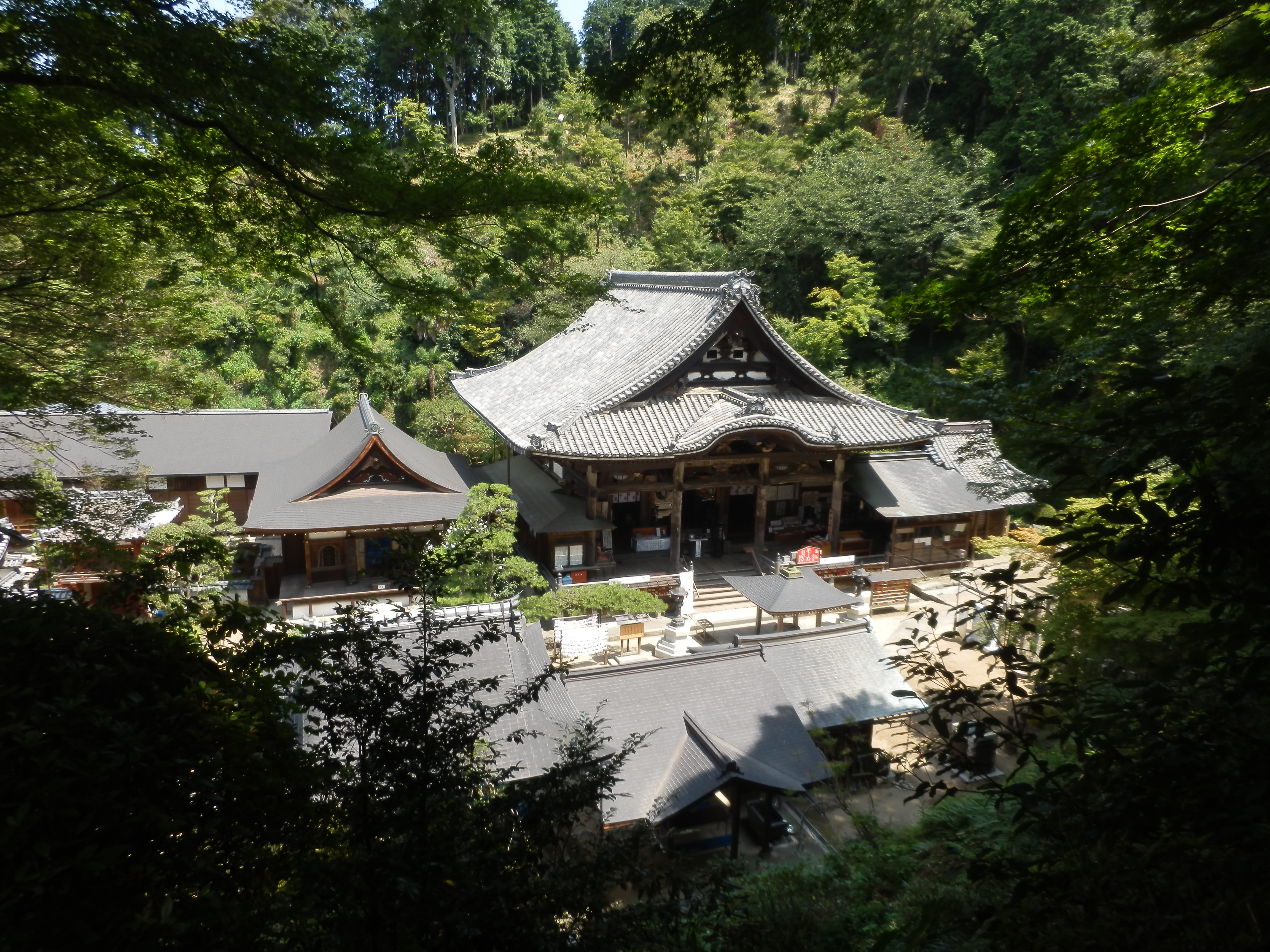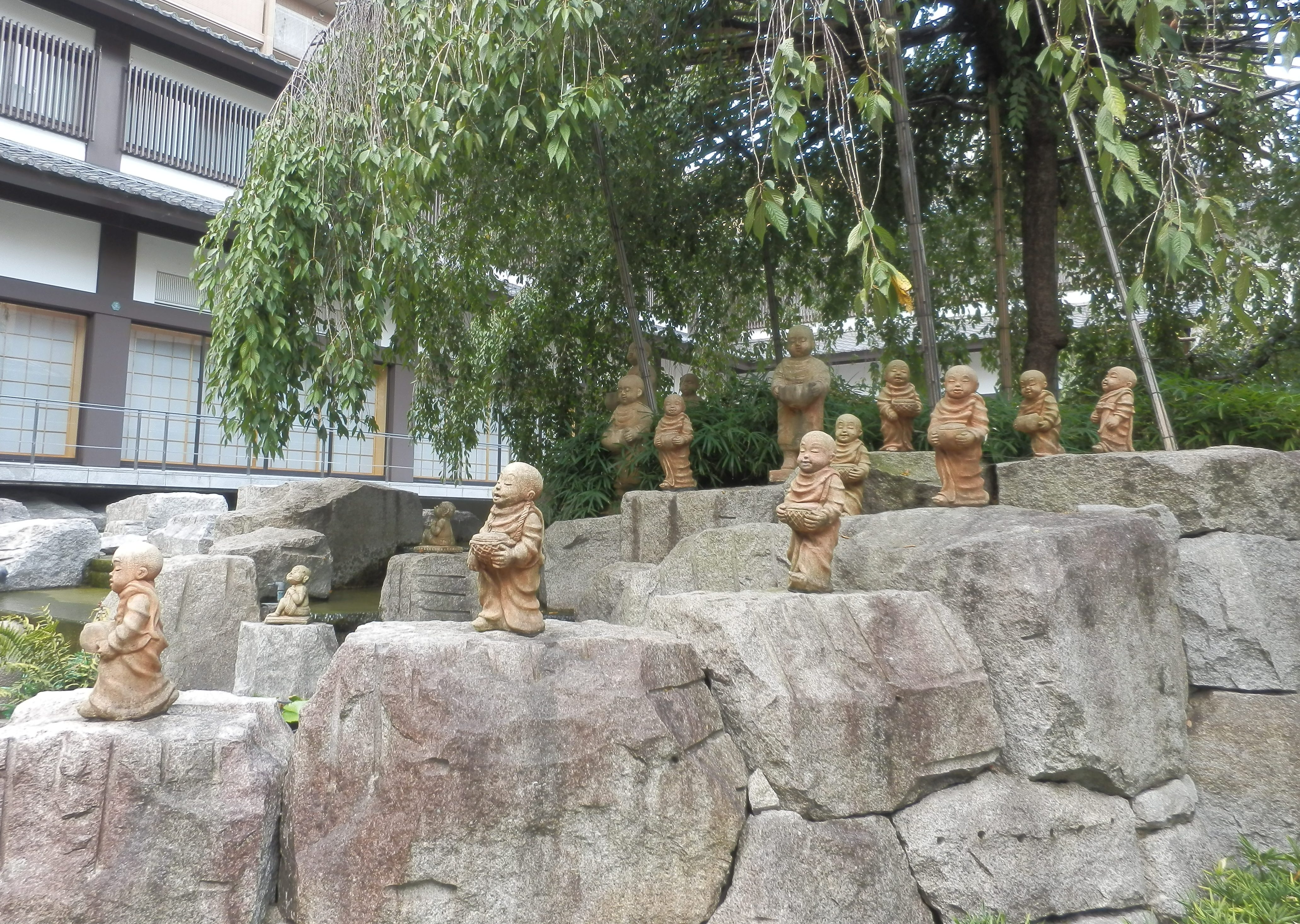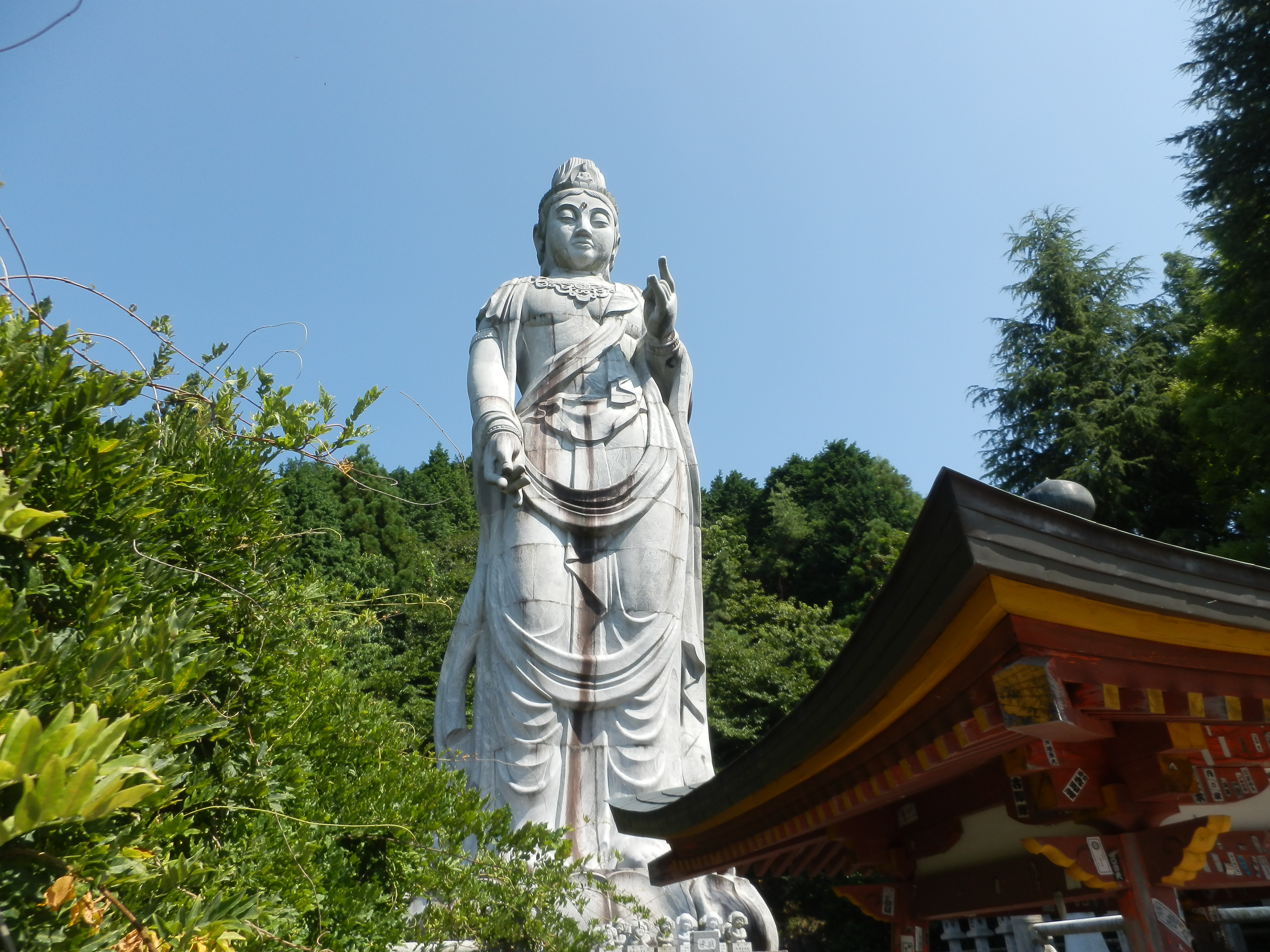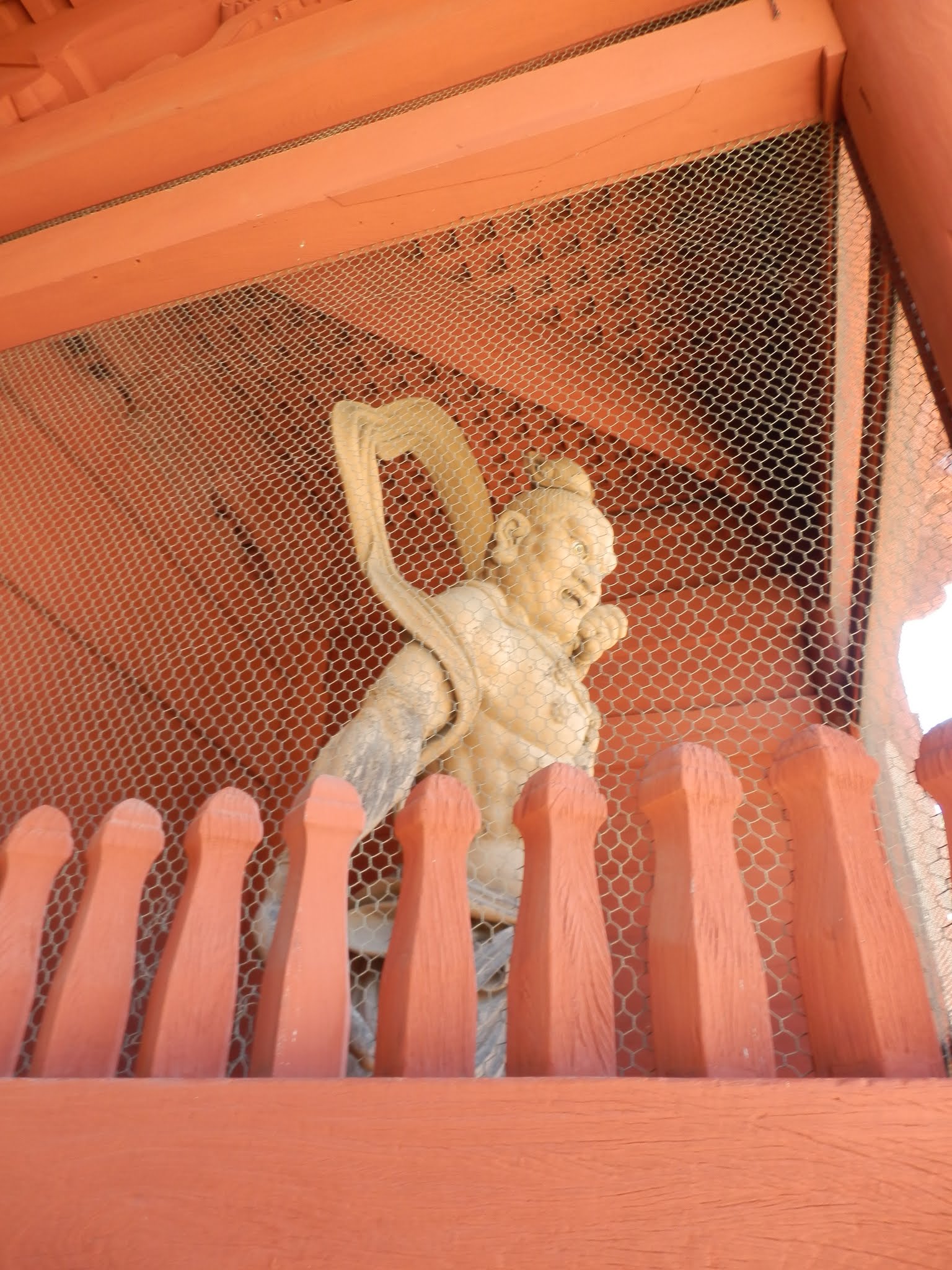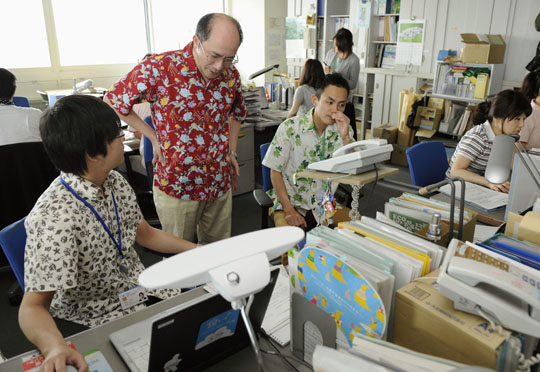Saigoku Kannon Pilgrimage: Okadera & Tsubosaka
Temple 6: Tsubosakadera 壷阪寺   Temple 7: Okadera岡寺
This month we explore temples six and seven on our thirty-three route, journeying a bit off the beaten path and into the wilds of Nara prefecture. Both of these temples are less accessible than the ones previously featured, but they are both worth a visit if you have the wherewithal to make the trek.
First up in numerical order is Tsubosaka-dera, or “Jar Hillside Temple.†This temple is associated with healing miracles related to sight and the eyes. For this reason, the principal image of Kannon is actually on display every day, because it is meant to be seen, in connection with its reputation for curing eye diseases. On my travels I did not have the opportunity to actually glimpse many of the Kannon images enshrined at the various temples I visited, so this was a treat indeed. The main image is of Juichimen Senju Kannon (eleven-heads and a thousand arms), carved from a kasha tree in the Muromachi era (1333 – 1573) to the original image carved in the 9th century, which had been destroyed by fire.
Before you get to the Hondo (which is actually the small octagonal building at the back of what looks like the main hall) though, where this image is located, it will be clear to you that this temple is not like many other temples you have been to in Japan. You will see that around the temple grounds there are many modern stone images carved in the ancient Indian style. This is related to the temple’s ongoing active engagement in social welfare programs in India, including hospices for Hansen’s disease sufferers and for the blind.
As I walked through the grounds, I could smell the scent of lavender flowers baking beneath the August sun, not realizing until later that it was probably part of the scented flower garden created for the use of blind visitors. Indeed as you approach the temple, you will see to the left a building called the JibÅen (Loving Mother’s Garden), a facility for the sight impaired elderly built in 1962 under the direction of Shoken Tokiwa, the late former abbot of the temple. Since then the temple has built a further five large facilities throughout Japan for the sight-impaired elderly; the temple continues under the guidance of his son, the present abbot.
 The India connection is also apparent in the Jataka Wall, a long relief carving made of Indian marble that tells stories from the life of the Shakyamuni Buddha. The Jogando is a mausoleum which also displays many Buddhist motifs of both Japanese and Indian style; the outer walls are covered in replications of the Phoenix Tile, the original of which is fired clay tile excavated from the temple grounds with a relief image of a phoenix on display inside the Hondo/Raido. Dating from the Hakuho era (late 7th Century), it is the oldest Buddhist artifact in Japan. Towering above on the hilltop is the Great Kannon, sculpted in India and shipped in pieces to Japan, she weighs 1,500 tons. These are but a few examples of the India connection you will see at Tsubosaka-dera.
The India connection is also apparent in the Jataka Wall, a long relief carving made of Indian marble that tells stories from the life of the Shakyamuni Buddha. The Jogando is a mausoleum which also displays many Buddhist motifs of both Japanese and Indian style; the outer walls are covered in replications of the Phoenix Tile, the original of which is fired clay tile excavated from the temple grounds with a relief image of a phoenix on display inside the Hondo/Raido. Dating from the Hakuho era (late 7th Century), it is the oldest Buddhist artifact in Japan. Towering above on the hilltop is the Great Kannon, sculpted in India and shipped in pieces to Japan, she weighs 1,500 tons. These are but a few examples of the India connection you will see at Tsubosaka-dera.
 Entrance to Tsubosaka-dera is 600 yen; be sure to taste the free samples of eye-healing tea in the shop near the front! As mentioned, getting to Tsubosaka-dera is tricky (I actually visited Okadera first because the schedule worked out better for me that way) compared to some temples we’ve seen, but it can be done! Take the Kintetsu line from Osaka (40 min) or Kyoto (70 min) to Tsubosakayama (壺阪山) station (watch it, you’ll have to change trains once at Yoshino station). From there, take a bus (watch it, they only run like five times a day—schedule is here [http://www.narakotsu.co.jp/rosen/rinji/2013spring_tsubosakadera.html]) or a taxi up the mountain to the temple. For driving directions, check out the temple’s webpage at the end of the article.
Entrance to Tsubosaka-dera is 600 yen; be sure to taste the free samples of eye-healing tea in the shop near the front! As mentioned, getting to Tsubosaka-dera is tricky (I actually visited Okadera first because the schedule worked out better for me that way) compared to some temples we’ve seen, but it can be done! Take the Kintetsu line from Osaka (40 min) or Kyoto (70 min) to Tsubosakayama (壺阪山) station (watch it, you’ll have to change trains once at Yoshino station). From there, take a bus (watch it, they only run like five times a day—schedule is here [http://www.narakotsu.co.jp/rosen/rinji/2013spring_tsubosakadera.html]) or a taxi up the mountain to the temple. For driving directions, check out the temple’s webpage at the end of the article.
Getting to Oka-dera, temple 7, is a similar picnic. Take the Kintetsu line to Kashihara Jingu Mae (橿原神宮å‰é§…), not Okadera station! Then from the east exit (æ±å£), get the Nara Kotsu bus to Oka-dera (similar caveats apply, schedule here http://jikoku.narakotsu.co.jp/form/asp/ejhr0060.asp). Make sure you note the return bus times on the bus placard when you get off the bus at the Oka-dera bus stop, from which it’s about a ten minute walk uphill. You can also, of course, taxi it up.
Okadera is located on the eastern mountains overlooking Asuka, the ancient first capital of Japan and an area rich in archaeology. The Nyoirin (wish-fulfilling) Kannon image found in the Hondo is the largest clay image in Japan, and is said to have been made by Kobo Daishi with clay from India, China, and Japan. The image does date to the Nara period (710 – 794), with the head and hands being original (the rest of the body is not in as good a shape). The image has survived many disasters, and having survived through the centuries of earthquakes, fires and typhoons, it is venerated as a protector from disaster. Okadera is visited especially by people seeking amulets for protection from disaster in the yakuyoke years of vulnerability (for men these ages are 25, 42, and 61, and for women the vulnerable years are 19, 33, and 37). The principal image at Okadera, like that of Tsubosaka-dera, is open to the public every day.
The formal name of Oka-dera is RyÅ«gaiji é¾è“‹å¯º, or “Dragon Lid Temple,†referring to the legend that the wandering ascetic shaman-priest Gien SÅjÅ subdued a dragon here and placed him in the pond in 663. On the temple grounds, you can see the pond where the dragon is held. There is a large stone lid that gives the temple its name (Dragon Lid) that lies below the surface of the water under the memorial stone in the middle of the pond. It is said that when there is drought in the region, the lid is shaken so that the Thunder Dragon will awaken and make rain.
There are paths winding all around the precinct of this mountainside temple, and they make for a pleasant stroll through the shade, as well as lead to an overlook providing a nice view of Asuka below.  The okunoin is especially interesting here as it is in a small cave! Every temple has an okunoin, usually deep in the mountains away from the bustle of the main temple; it is the most sacred place in the temple grounds, the source of the spiritual energy of the temple. This is the only Okunoin on the pilgrimage that is a natural feature of the landscape. The cave is called MirokudŠ– the temple of the Buddha of the Future. The cave also esoterically symbolizes the womb. More information about the other features of Oka-dera can be found here [http://sacredjapan.com/Temple%2007/Places07.htm]!
The okunoin is especially interesting here as it is in a small cave! Every temple has an okunoin, usually deep in the mountains away from the bustle of the main temple; it is the most sacred place in the temple grounds, the source of the spiritual energy of the temple. This is the only Okunoin on the pilgrimage that is a natural feature of the landscape. The cave is called MirokudŠ– the temple of the Buddha of the Future. The cave also esoterically symbolizes the womb. More information about the other features of Oka-dera can be found here [http://sacredjapan.com/Temple%2007/Places07.htm]!
 Learn why Tsubosaka-dera is called “Jar-Hillside Temple†and the story behind the puppet play that made it such a popular destination for the sight-impaired: http://sacredjapan.com/Temple%2006/Legends06.htm
Learn why Tsubosaka-dera is called “Jar-Hillside Temple†and the story behind the puppet play that made it such a popular destination for the sight-impaired: http://sacredjapan.com/Temple%2006/Legends06.htm
Tsubosaka-dera’s official site: http://www.tsubosaka1300.or.jp/ (Japanese)
Oka-dera’s official site: http://www4.kcn.ne.jp/~balance/index.html (Japanese)
My adventures visiting Oka-dera and Tsubosaka-dera last August: http://eminihonde.blogspot.com/2012/08/temples-number-six-and-seven-okadera.html
Happy travels! Don’t forget your map [https://maps.google.com/maps/ms?msid=211781966201391799171.0004a622468a784875fec&msa=0]
-Lemmon
Â
